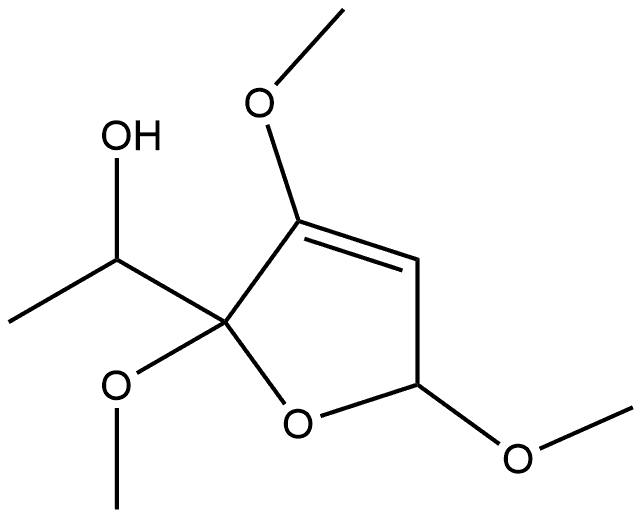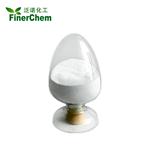3-Hydroxy-2-methyl-4H-pyran-4-one
- CAS No.
- 118-71-8
- Chemical Name:
- 3-Hydroxy-2-methyl-4H-pyran-4-one
- Synonyms
- MALTOL;3-HYDROXY-2-METHYL-4-PYRONE;LARIXINIC ACID;3-HYDROXY-2-METHYL-4-PYRANONE;4H-Pyran-4-one, 3-hydroxy-2-methyl-;Veltol;Maltol (4 g);Vetol;Maltol ,98%;Methyl maltol
- CBNumber:
- CB5768714
- Molecular Formula:
- C6H6O3
- Molecular Weight:
- 126.11
- MDL Number:
- MFCD00006578
- MOL File:
- 118-71-8.mol
| Melting point | 160-164 °C(lit.) |
|---|---|
| Boiling point | 205 °C |
| Density | 1.046 g/mL at 25 °C |
| vapor pressure | 0.15Pa at 24℃ |
| refractive index |
n |
| FEMA | 2656 | MALTOL |
| Flash point | 198 °F |
| storage temp. | 2-8°C |
| solubility | methanol: 50 mg/mL, clear |
| form | Liquid |
| pka | 8.41±0.10(Predicted) |
| color | Clear colorless |
| PH | 5.3 (0.5g/l, H2O) |
| Odor | at 5.00 % in benzyl alcohol. sweet caramel cotton candy jam fruity baked bread |
| Odor Type | caramellic |
| biological source | synthetic |
| explosive limit | 25% |
| Water Solubility | 1.2 g/100 mL (25 ºC) |
| Merck | 14,5713 |
| JECFA Number | 1480 |
| BRN | 112169 |
| InChIKey | XPCTZQVDEJYUGT-UHFFFAOYSA-N |
| LogP | 2.3 at 25℃ |
| Substances Added to Food (formerly EAFUS) | MALTOL |
| CAS DataBase Reference | 118-71-8(CAS DataBase Reference) |
| EWG's Food Scores | 1 |
| FDA UNII | 3A9RD92BS4 |
| NIST Chemistry Reference | 3-Hydroxy-2-methyl-4h-pyran-4-one(118-71-8) |
| EPA Substance Registry System | Maltol (118-71-8) |
| UNSPSC Code | 85151701 |
| NACRES | NA.24 |
SAFETY
Risk and Safety Statements
| Symbol(GHS) |  GHS07 |
|||||||||
|---|---|---|---|---|---|---|---|---|---|---|
| Signal word | Warning | |||||||||
| Hazard statements | H302 | |||||||||
| Precautionary statements | P264-P270-P301+P312-P501 | |||||||||
| Hazard Codes | Xn,Xi | |||||||||
| Risk Statements | 22-38-36/37/38-41-20/22 | |||||||||
| Safety Statements | 37-37/39-26-36-36/37/39-36/37 | |||||||||
| RIDADR | UN 3334 | |||||||||
| WGK Germany | 3 | |||||||||
| RTECS | UQ1050000 | |||||||||
| Autoignition Temperature | 1364 °F | |||||||||
| Hazard Note | Irritant | |||||||||
| TSCA | Yes | |||||||||
| HS Code | 29329995 | |||||||||
| Hazardous Substances Data | 118-71-8(Hazardous Substances Data) | |||||||||
| NFPA 704 |
|
3-Hydroxy-2-methyl-4H-pyran-4-one price More Price(48)
| Manufacturer | Product number | Product description | CAS number | Packaging | Price | Updated | Buy |
|---|---|---|---|---|---|---|---|
| Sigma-Aldrich | W265624 | Maltol natural, FG | 118-71-8 | 1kg | $185 | 2024-03-01 | Buy |
| Sigma-Aldrich | W265608 | Maltol ≥99.0%, FCC, FG | 118-71-8 | 250g | $76.5 | 2024-03-01 | Buy |
| Sigma-Aldrich | W265624 | Maltol natural, FG | 118-71-8 | 5kg | $760 | 2024-03-01 | Buy |
| Sigma-Aldrich | W265608 | Maltol ≥99.0%, FCC, FG | 118-71-8 | 1kg | $110 | 2024-03-01 | Buy |
| Sigma-Aldrich | W265608 | Maltol ≥99.0%, FCC, FG | 118-71-8 | 5kg | $371 | 2024-03-01 | Buy |
3-Hydroxy-2-methyl-4H-pyran-4-one Chemical Properties,Uses,Production
Description
3-hydroxy-2-methyl-4h-pyran-4-one (also named as Maltol, Larixinic acid, Palatone and Veltol) is a natural compound. Maltol is found in chicory, roasted malt, breads, milk, heated butter, uncured smoked pork, cocoa, coffee, roasted barley, roasted peanuts, roasted filbert, soybean, in the bark of larch tree, in pine needles, and in roasted malt (from which it gets its name) etc. It has the odor of cotton candy and caramel.
Maltol is widely used as flavor enhancer to improve mouthfeel and to enhance flavor of candy and baked foods in food production and of soft drinks in beverage industry. It is used as intermediate in pharmaceutical for medicine manufacturing. It is used as flavoring agent in cosmetic and personal care industries to enhance flavor. According to FEEDAP Panel, maltol is safe to be added to feed for all animal species at the normal use level of 5 mg/kg feed.
References
[1] https://en.wikipedia.org/wiki/Maltol
[2] http://onlinelibrary.wiley.com/doi/10.2903/j.efsa.2016.4619/full
[3] http://www.foodchemadditives.com/applications-uses/1694
Description
Maltol has a warm, sweet, fruity odor and a jam-like odor in solution. It may be prepared by alkaline hydrolysis of streptomycin salts; also from piperidine to pyromeconic acid and subsequent methylation at the 2 position.
Chemical Properties
White, crystalline powder; characteristic caramel-butterscotch odor and suggestive of a fruity-strawberry aroma in dilute solution. Melting range 160–164C. Slightly soluble in water; more soluble in alcohol and propylene glycol.
Chemical Properties
Maltol has a caramel–butterscotch odor and in solution it has a jam-like odor. This compound is also reported to have a suggestive of fruity, strawberry aroma in dilute solution.
Chemical Properties
White crystalline solid with a characteristic, caramel-like odor and taste. In dilute solution it possesses a sweet, strawberry-like or pineapple-like flavor and odor.
Chemical Properties
Maltol occurs in pine needles and the bark of young larch trees. It is produced when cellulose or starch is heated and is a constituent of wood tar oils. It forms crystals (mp 162–164°C) with a caramel-like odor, reminiscent of freshly baked cakes.
Occurrence
Reported found in the bark of young larch trees (Pinus larix), pine needles (Abies alba), chicory, wood tars and oils, and roasted malt. Also reported found in wheat and rye bread, milk, butter, smoked pork, beer, cocoa, coffee, roasted barley, filberts, peanuts, soybean, beans, tamarind, licorice, sake, malt, dried bonito, clam and cocoa liquor.
Uses
A fragrance molecule used in flavor enhancers and fragrances.
Uses
Maltol may be used as an analytical reference standard for the quantification of the analyte in:
- Synthetic and commercial food samples using UV–Vis spectrophotometry with chemometrics methods.
- Food and beverage matrices using FIA-direct chemiluminescence procedure.
Uses
Flavoring agent, to impart "freshly baked" odor and flavor to bread and cakes.
Definition
ChEBI: A natural product found in Cordyceps sinensis.
Preparation
Maltol may be produced synthetically starting from kojic acid . Alternatively, it can be isolated from beechwood tar or from extracts of needles from the genus Abies. Commercially available extracts fromAbies balsamea needles, which are also used as flavor and fragrance materials, usually contain 3–8% maltol. It is used in aroma compositions with a caramel note and as a taste intensifier in, for example, fruit flavors (particularly in strawberry flavor compositions).
Production Methods
Maltol is mainly isolated from naturally occurring sources such as beechwood and other wood tars; pine needles; chicory; and the bark of young larch trees. It may also be synthesized by the alkaline hydrolysis of streptomycin salts or by a number of other synthetic methods.
Aroma threshold values
Detection: 29 ppb
Taste threshold values
Taste characteristics at 100 ppm: sweet, caramellic, cotton candy, with jamy fruity and berry notes.
Synthesis Reference(s)
The Journal of Organic Chemistry, 45, p. 1109, 1980 DOI: 10.1021/jo01294a037
Tetrahedron Letters, 17, p. 1363, 1976 DOI: 10.1016/S0040-4039(00)78065-8
Toxicity evaluation
The acute oral LD50 in rats was reported to be 2.33 g/kg (1.57-3.09 g/kg) (Moreno, 1974). The acute oral 7-day LD50s in mice, rats and chicks were reported to be 848, 1440 and 3720 mg/kg, respectively (Gralla, Stebbins, Coleman & Delahunt, 1969). Acute oral LD50 values were found to be 550 mg/kg in mice, 1620 mg/kg in rabbits and 1410 mg/kg in guinea-pigs (Dow Chemical Company, 1967). The acute sc LD50 in mice was found to be 820 mg/kg. Sc injection of 400 mg/kg resulted in decreased spontaneous activity, bradycardia, hypothermia, skeletal-muscle relaxation and diminution of pinna, corneal, and ipsilateral flexor reflexes (Aoyagi, Kimura & Murata, 1974). Because of a lack of sample, 5 g/kg could only be applied to one rabbit in the dermal LD50 study, but this dosage was not lethal in the one rabbit (Moreno, 1974).
General Description
White crystalline powder with a fragrant caramel-butterscotch odor. pH (5% aqueous solution) 5.3.
Air & Water Reactions
May be sensitive to prolonged exposure to light and air. Somewhat soluble in water at room temperature. Freely soluble in hot water [Merck]. Slightly soluble in cold water.
Reactivity Profile
3-Hydroxy-2-methyl-4H-pyran-4-one is weakly acidic. Reacts with bases. May react with reducing agents. Volatile with steam.
Fire Hazard
Flash point data on 3-Hydroxy-2-methyl-4H-pyran-4-one are not available; however, 3-Hydroxy-2-methyl-4H-pyran-4-one is probably combustible.
Flammability and Explosibility
Not classified
Pharmaceutical Applications
Maltol is used in pharmaceutical formulations and food products as a flavoring agent or flavor enhancer. In foods, it is used at concentrations up to 30 ppm, particularly with fruit flavorings, although it is also used to impart a freshly baked odor and flavor to bread and cakes. When used at concentrations of 5–75 ppm, maltol potentiates the sweetness of a food product, permitting a reduction in sugar content of up to 15% while maintaining the same level of sweetness. Maltol is also used at low levels in perfumery.
Pharmacology
In mice, spontaneous motor activity was depressed by sc injection oi relatively low doses of maltol (75 mg/kg), hexobarbitone sleeping time was prolonged by sc or oral administration of 300 mg/kg, and convulsions induced by pentylenetetrazole or strychnine were inhibited by sc injection of toxic doses (500 mg/kg), but 1 mM concentrations of maltol had no effect on oxygen uptake by slices of the brain cortex of the rat (Aoyagi et al. 1974).
Safety Profile
Moderately toxic by ingestion, intraperitoneal, and subcutaneous routes. A skin irritant. Human mutation data reported. When heated to decomposition it emits acrid smoke and irritating fumes.
Safety
Maltol is generally regarded as an essentially nontoxic and
nonirritant material. In animal feeding studies, it has been shown
to be well tolerated with no adverse toxic, reproductive, or
embryogenic effects observed in rats and dogs fed daily intakes of
up to 200mg/kg body-weight of maltol, for 2 years.The WHO
has set an acceptable daily intake for maltol at up to 1mg/kg body-weight.A case of allergic contact dermatitis, attributed to the
use of maltol in a lip ointment, has been reported.
LD50 (chicken, oral): 3.72 g/kg
LD50 (guinea pig, oral): 1.41 g/kg
LD50 (mouse, oral): 0.85 g/kg
LD50 (mouse, SC): 0.82 g/kg
LD50 (rabbit, oral): 1.62 g/kg
LD50 (rat, oral): 1.41 g/kg
Synthesis
By alkaline hydrolysis of streptomycin salts; also from piperdine to pyromeconic acid and subsequent methylation at the 2 position.
Metabolism
Maltol is rapidly and extensively metabolized in the dog and excreted by the conjugation pathway common to phenolic compounds. Rennhard (1971) reported that 57% of an iv dose was recovered in 24 hr, 88% of the total excretion occurring in the first 6 hr and 65-70% of the dose administered being recovered as sulphate and glucuronide conjugates
storage
Maltol solutions may be stored in glass or plastic containers. The bulk material should be stored in a well-closed container, protected from light, in a cool, dry place.
Purification Methods
It crystallises from CHCl3, toluene, aqueous 50% EtOH or H2O, and is volatile in steam. It can be readily sublimed in a vacuum. It forms a Cu2+ complex. [Beilstein 17 III/IV 5916, 18/1 V 114.]
Incompatibilities
Concentrated solutions in metal containers, including some grades of stainless steel, may discolor on storage.
Regulatory Status
GRAS listed. Included in the FDA Inactive Ingredients Database (oral solutions and syrups). Included in the Canadian List of Acceptable Non-medicinal Ingredients.


3-Hydroxy-2-methyl-4H-pyran-4-one Preparation Products And Raw materials
Raw materials
1of5
Preparation Products
| Supplier | Tel | Country | ProdList | Advantage | |
|---|---|---|---|---|---|
| Jiangxi Alpha Hi-tech Pharmaceutical Co., Ltd | 510-85010237 | overseamarketing@alphahi-tech.com | CHINA | 41 | 58 |
| Wuhan Aoliqisi New Material Technology Co., Ltd. | +86-13545906766; +8613545906766 | sales@whaop.com | China | 263 | 58 |
| Hebei Chuanghai Biotechnology Co., Ltd | +86-15531157085 +86-15531157085 | abby@chuanghaibio.com | China | 8809 | 58 |
| Hebei Mujin Biotechnology Co.,Ltd | +86 13288715578 +8613288715578 | sales@hbmojin.com | China | 12817 | 58 |
| Hebei Yanxi Chemical Co., Ltd. | +8617531153977 | allison@yan-xi.com | China | 5855 | 58 |
| Hebei Chuanghai Biotechnology Co,.LTD | +86-13131129325 | sales1@chuanghaibio.com | China | 5876 | 58 |
| Hebei Fengjia New Material Co., Ltd | +86-0311-87836622 +86-18712993135 | sales01@tairunfaz.com | China | 8051 | 58 |
| Hebei Chuanghai Biotechnology Co., Ltd | +8615531151365 | mina@chuanghaibio.com | China | 18137 | 58 |
| Henan Fengda Chemical Co., Ltd | +86-371-86557731 +86-13613820652 | info@fdachem.com | China | 20245 | 58 |
| Shaanxi TNJONE Pharmaceutical Co., Ltd | +8618092446649 | sarah@tnjone.com | China | 1143 | 58 |
View Lastest Price from 3-Hydroxy-2-methyl-4H-pyran-4-one manufacturers
| Image | Update time | Product | Price | Min. Order | Purity | Supply Ability | Manufacturer | |
|---|---|---|---|---|---|---|---|---|
 |
2025-04-01 | 3-Hydroxy-2-methyl-4-pyrone
118-71-8
|
US $5.00 / KG | 1KG | ≥99.5% | 500mt/year | Jinan Finer Chemical Co., Ltd | |
 |
2025-04-01 | Maltol
118-71-8
|
US $120.00 / kg | 1kg | 99% | 20ton | Hebei Zhuanglai Chemical Trading Co.,Ltd | |
 |
2025-03-31 | 3-Hydroxy-2-methyl-4H-pyran-4-one
118-71-8
|
US $10.00 / KG | 1KG | 99% | 10 mt | Hebei Chuanghai Biotechnology Co., Ltd |
-

- 3-Hydroxy-2-methyl-4-pyrone
118-71-8
- US $5.00 / KG
- ≥99.5%
- Jinan Finer Chemical Co., Ltd
-

- Maltol
118-71-8
- US $120.00 / kg
- 99%
- Hebei Zhuanglai Chemical Trading Co.,Ltd
-

- 3-Hydroxy-2-methyl-4H-pyran-4-one
118-71-8
- US $10.00 / KG
- 99%
- Hebei Chuanghai Biotechnology Co., Ltd





